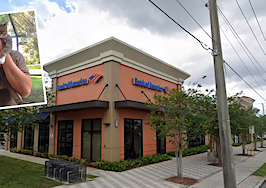 September means Back to Basics here at Inman. As real estate navigates the post-settlement era with new commission rules, real estate professionals from across the country will share what’s working for them, how they’ve evolved their systems and tools, and where they’re investing personally.
September means Back to Basics here at Inman. As real estate navigates the post-settlement era with new commission rules, real estate professionals from across the country will share what’s working for them, how they’ve evolved their systems and tools, and where they’re investing personally.
This article was updated on September 6, 2024.
It’s strange out there right now. Agents are glued to the Fed’s X feed to know exactly when to pounce on waiting buyers, should the rate drop. But when they do activate sidelined buyers, they better have that new buyer agreement buttoned up.
However, all the new administrative hurdles remain subservient to the industry’s largest and most longstanding concern — agent safety.
The statistics are alarming.
According to the National Association of Realtors’ 2023 Member Safety Report, 48 percent of agents felt threatened in a suburban area, whereas only 13 percent feel the same in a rural area. There is no safety in numbers. Gated communities are not safer.
The report says that the majority of respondents (24 percent) said they feared for their safety after an email, text or voicemail.
That’s why using an app is beneficial for documenting and verifying who you’re meeting, where and when. Such tools also track and record communications between unknown leads or potential clients, can trigger additional caution and maybe catch a willing perpetrator.
Those abilities are especially crucial considering that 34 percent surveyed in 2023 said they “had met a new or prospective client alone at a secluded location or property.”
Thankfully, a number of apps and technologies are out there to assist the industry in keeping itself safe. Some of the products listed here are purpose-built for immediate personal protection, and others offer a wider array of features for ensuring more than just physical safety.
Jay Thompson’s “61 safety tips every agent needs” is a great resource that you should check out. After that, consider downloading and subscribing to one of the following technology products that emphasize or include agent safety as a feature.
Apps you should know
Tether RE
This app just won an award at NAR’s 2024 iOi Summit Pitch Battle and earned four stars in its Inman review.
Tether RE has a number of smart features that are simple to activate, redundant and marry the software with native features of most mobile phones, such as their GPS chips and accelerometers. Its feature set is easy to set up and activate to ensure a user is fumbling around with it before a showing starts.
Tether RE offers four tiers of protection, the first being verification of the person being met at the property; the second form of protection is a simple panic button that boldly sits ready to go on the phone’s screen. It uses the phone’s native features to detect a fall and can also allow agents and others to actively follow them as they move through a tour or community.
Forewarn
The product of publicly traded Red Violet Company (RDVT), Forewarn provides almost instant background checks using a person’s phone number.
Users can review the person’s property ownership history, tenure with that particular phone number, vehicle ownership history and, of course, any criminal history, from violent felonies and sex offenses to drug busts and misdemeanors.
Forwarn was recently selected by the Realtors of South Central Kansas as a software partner for its more than 2,500 members.
PeopleSmart is another fast and easy way to verify identities.
Noonlight
Consistently the highest-rated safety app across all use cases, Noonlight even integrates directly with Tinder.
The interface couldn’t be more simple. To activate the app, hold down the single large button on the screen, and wait for a pin number. Upon release, enter the number if safe; don’t if you’re not. The app will notify the police and share your location.
Agents can especially benefit from its Timeline feature, which uses a note, day and time to document activity — perfect to use before a scheduled showing.
Life360
This comprehensive digital safety solution is ideal for families and on-the-go professionals such as real estate agents.
The subscription service comes with an array of features that can track members’ current locations among groups of designated people, alert first responders and even share nearby crime reports.
Once prompted, the app’s pulsing SOS button is ready to quickly send for help when a user is under sudden duress, radiating a call for help to up to five preset contacts.
Leverage virtual showings
There are other ways to ensure your safety than apps specifically designed for it. If you’re unsure of the person you’re supposed to meet for a showing, ask if they’ll consider viewing a video walkthrough. If the listing material has one, encourage them to view it.
Dress it up as you wanting to make sure the listing is “worth their valuable time.”
Use their feedback to determine just how serious they are about seeing properties. If there isn’t a video tour or Matterport digital twin already, arrange with the listing agent to do your own 15-minute preview recording.
Be thorough, capture the highlights, add verbal notes, and of course, do your best job to portray the house in its best light.
You can use your mobile device’s native camera, assemble a slick video using Vuse or REVideos, or consider creating a DO Audio Tour that uses your voice to narrate still images. The intent is to give an aspiring “buyer” as much information about a property at arm’s length until you’ve had enough time to vet them fully.
There are a number of methods you can use to present a listing online before showing in person, Inman’s “Handbook on digital home showings“ is a great starting point.
Smartphones and smartwatches
Don’t forget about your most accessible safety tool, your smartphone. (Of course, coverage issues may apply.)
On your later model iPhone, simultaneously holding down the power and a volume button will display a slider to dial 911 after a 5-second countdown automatically.
Your Apple Watch has the same functionality. Simply press the side button to see the 911 slide appear.
Android phones vary but will allow location sharing through Google for specified amounts of time, something you can also do on an iPhone.
On Samsung phones, swipe up to reveal the lock screen, and enter 911 on the dial pad. Also, don’t forget to add names to your emergency call list because those folks will be listed on that screen, too.
Remember that no technology product can replace sound judgment and experience. No commission is worth your well-being. Ask a friend to accompany you, tell your seller “no” if needed, and lastly, know that it’s OK to cancel.
If agent safety is something you’re passionate about (and why wouldn’t you be?), consider donating, volunteering or in some way supporting the Beverly Carter Foundation. And, don’t miss “Inman’s essential guide to agent safety.”
At the end of the day
Although it sure helps a buyer agent to see that ever-critical mortgage pre-approval letter before agreeing to show houses, there isn’t an industrywide best practice to ensure an agent’s physical safety before doing so. That has to change.
Agents should consider creating task forces or committees and, maybe under the banner of regional multiple listing services and associations, publishing information about the risks of showing homes before initially meeting someone, which happens far too often. Create and enforce formal standards, and involve the buying public in some way.
The industry loves paperwork, so how about a “pre-showing identity verification” disclosure? One more form can’t hurt.
The only people who can enact change on this front are the people on the front — you, the agents.













